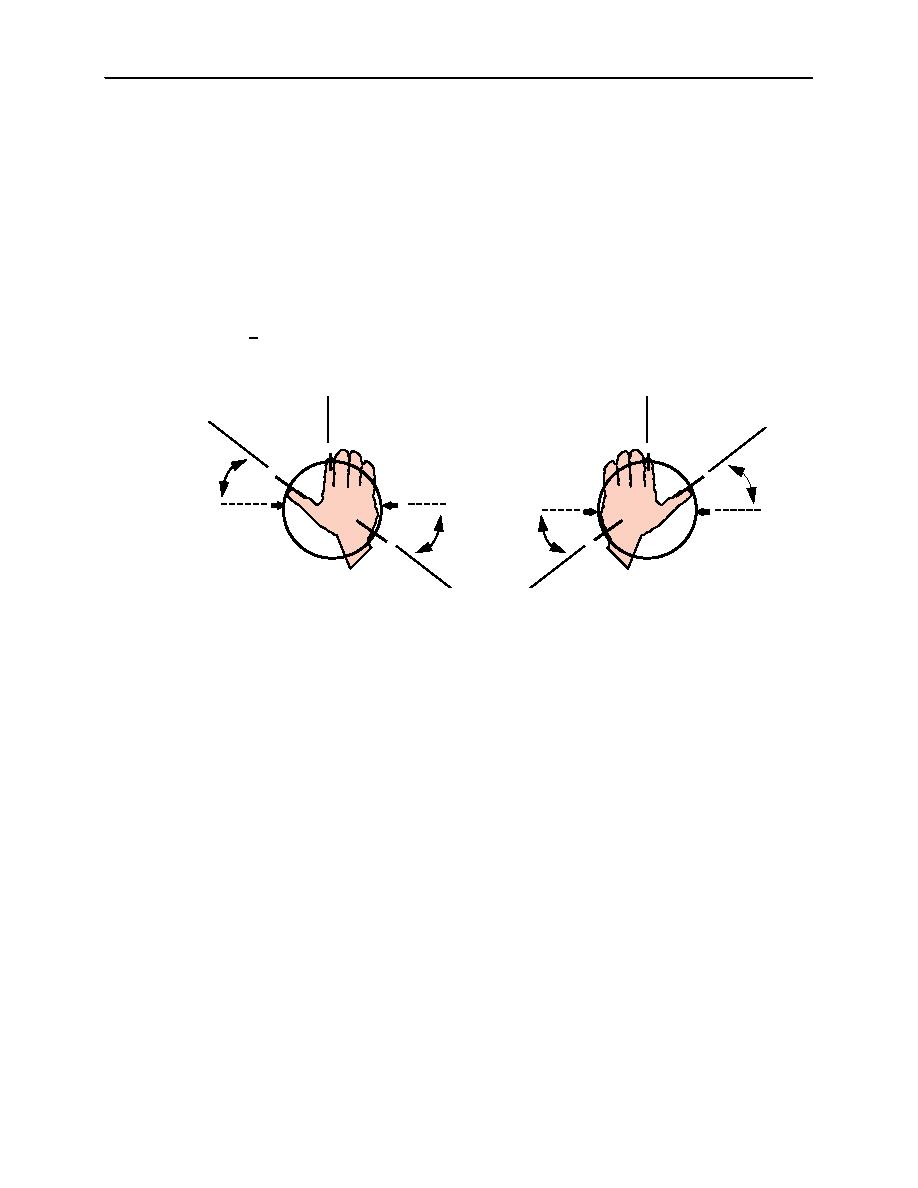 |
|||
|
|
|||
|
Page Title:
Figure 404-2. Holding Pattern Entry Technique. |
|
||
| ||||||||||
|
|  JOINT ADVANCED MULTI-ENGINE T-44A
Time. Begin outbound timing when over or abeam the fix. If you cannot determine the abeam
position, start timing when wings level outbound.
Transition. Confirm airspeed is 150 KIAS and altitude is as assigned.
Twist. Twist the CDI to the inbound holding course.
Talk. Report established in holding if required. [Report the time and altitude upon reaching a
holding fix and when leaving any assigned holding fix; however, these reports may be omitted if
involved in instrument training at military terminal area facilities when radar service is being
provided; e.g., in the local area, holding reports are not required.]
Entry Turns. The angular difference between the holding course and the heading at initial holding fix
passage determines the direction of turn to enter the holding pattern. Enter the holding pattern based on
your heading (+5) relative to the three entry sectors depicted in the AIM and alternately depicted in the
figure below. Upon reaching the holding fix, follow the appropriate procedure for your entry sector.
Left Turns
Right Turns
T.D.
T.D.
PARALLEL
20 deg
20 deg
PARALLEL
20 deg
DIRECT
DIRECT
20 deg
Figure 404-2. Holding Pattern Entry Technique.
Index finger aligns with aircraft heading on the RMI/HSI and thumb points in the direction of turns in
holding. The no-wind outbound heading of the holding pattern will be in one of three entry sectors.
Remember, your fingers are parallel to each other, signifying a parallel entry. The lower portion of your
hand is directly attached to your wrist, signifying a direct entry. Your index finger and thumb roughly form
the shape of a teardrop, signifying a teardrop entry.
NOTE: An alternate technique is to use your thumb, index, and middle fingers to form the same angles shown
above.
Parallel Entry. Turn to a heading to parallel the holding course outbound on the non-holding side for the
appropriate time or distance, then turn in the direction of the holding pattern through more than 180 and
return to the holding fix or intercept the holding course inbound. Correct outbound for winds to remain
parallel to the holding course. If not enough drift correction is input, and the aircraft drifts to intercept the
holding course outbound, do not allow the aircraft to drift across the holding course outbound. Use course
guidance to apply appropriate drift correction to remain on the holding course outbound for the remainder
of the time or distance and then turn toward the holding side to return to the holding fix or intercept the
holding course inbound.
Teardrop Entry. Turn outbound to a heading for a 30 teardrop entry (on the holding side) for a period of
one minute then turn in the direction of the holding pattern to intercept the inbound holding course. If leg
lengths are based on DME or timing longer than one minute, turn to parallel the holding course outbound
after one minute. Flying the teardrop heading longer than one minute may place the aircraft farther than
desired from the inbound holding course.
Direct Entry. Turn in the direction of holding and parallel the holding course outbound on the holding side
for the appropriate time or distance, then turn in the direction of holding (toward the holding course) to
intercept the holding course inbound.
4-26
RADIO INSTRUMENTS STAGE
|
|
Privacy Statement - Press Release - Copyright Information. - Contact Us |